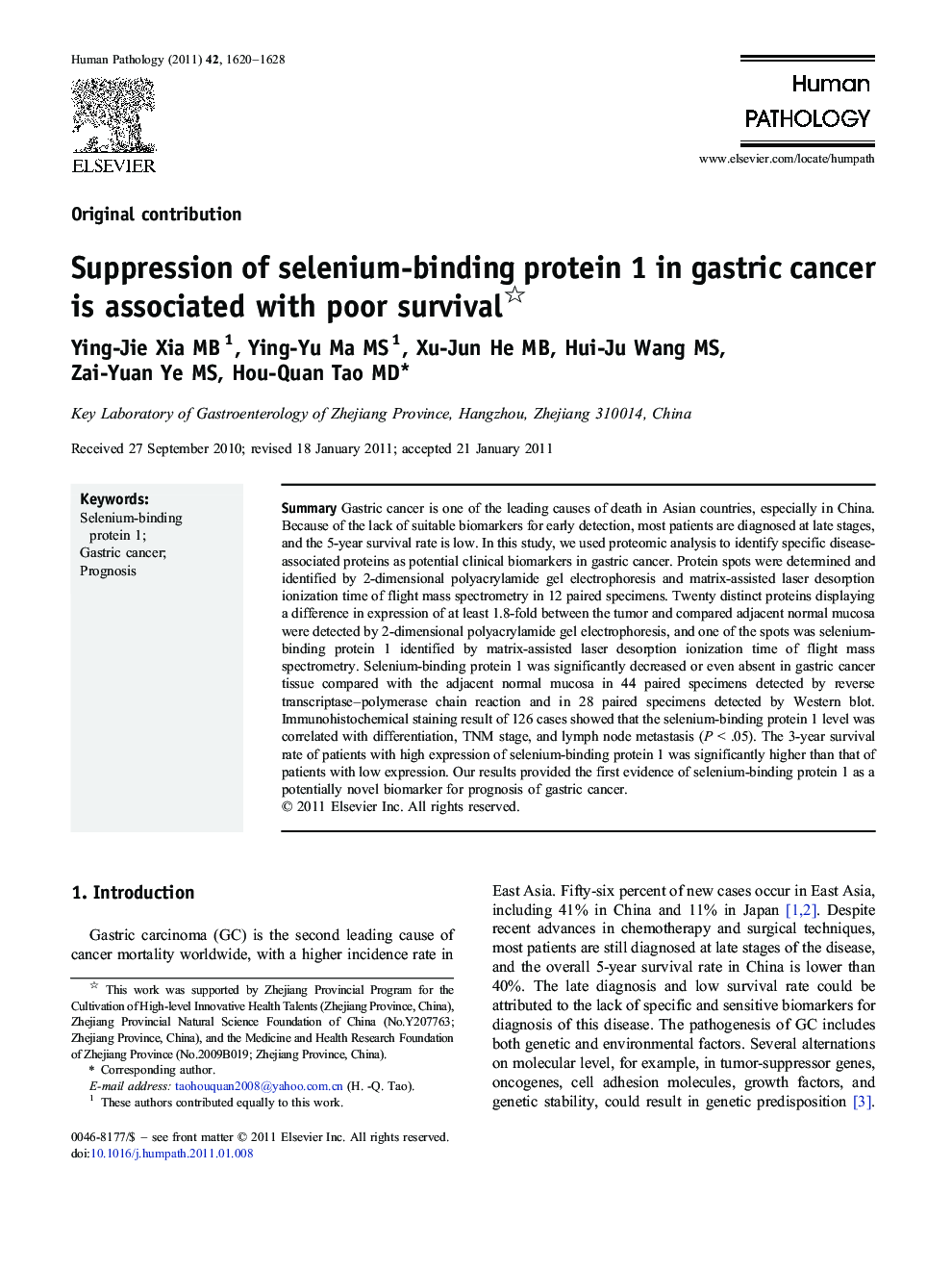| Article ID | Journal | Published Year | Pages | File Type |
|---|---|---|---|---|
| 4133670 | Human Pathology | 2011 | 9 Pages |
SummaryGastric cancer is one of the leading causes of death in Asian countries, especially in China. Because of the lack of suitable biomarkers for early detection, most patients are diagnosed at late stages, and the 5-year survival rate is low. In this study, we used proteomic analysis to identify specific disease-associated proteins as potential clinical biomarkers in gastric cancer. Protein spots were determined and identified by 2-dimensional polyacrylamide gel electrophoresis and matrix-assisted laser desorption ionization time of flight mass spectrometry in 12 paired specimens. Twenty distinct proteins displaying a difference in expression of at least 1.8-fold between the tumor and compared adjacent normal mucosa were detected by 2-dimensional polyacrylamide gel electrophoresis, and one of the spots was selenium-binding protein 1 identified by matrix-assisted laser desorption ionization time of flight mass spectrometry. Selenium-binding protein 1 was significantly decreased or even absent in gastric cancer tissue compared with the adjacent normal mucosa in 44 paired specimens detected by reverse transcriptase–polymerase chain reaction and in 28 paired specimens detected by Western blot. Immunohistochemical staining result of 126 cases showed that the selenium-binding protein 1 level was correlated with differentiation, TNM stage, and lymph node metastasis (P < .05). The 3-year survival rate of patients with high expression of selenium-binding protein 1 was significantly higher than that of patients with low expression. Our results provided the first evidence of selenium-binding protein 1 as a potentially novel biomarker for prognosis of gastric cancer.
